PART TWO
In Part One, ALF FISHER – the owner of 1877-built De Winton 0-4-0VBT Chaloner – recalled how he saved the locomotive for preservation and its early years running at the Leighton Buzzard Railway. This time, he picks up the story in the mid-70s when Chaloner was due a heavy overhaul.
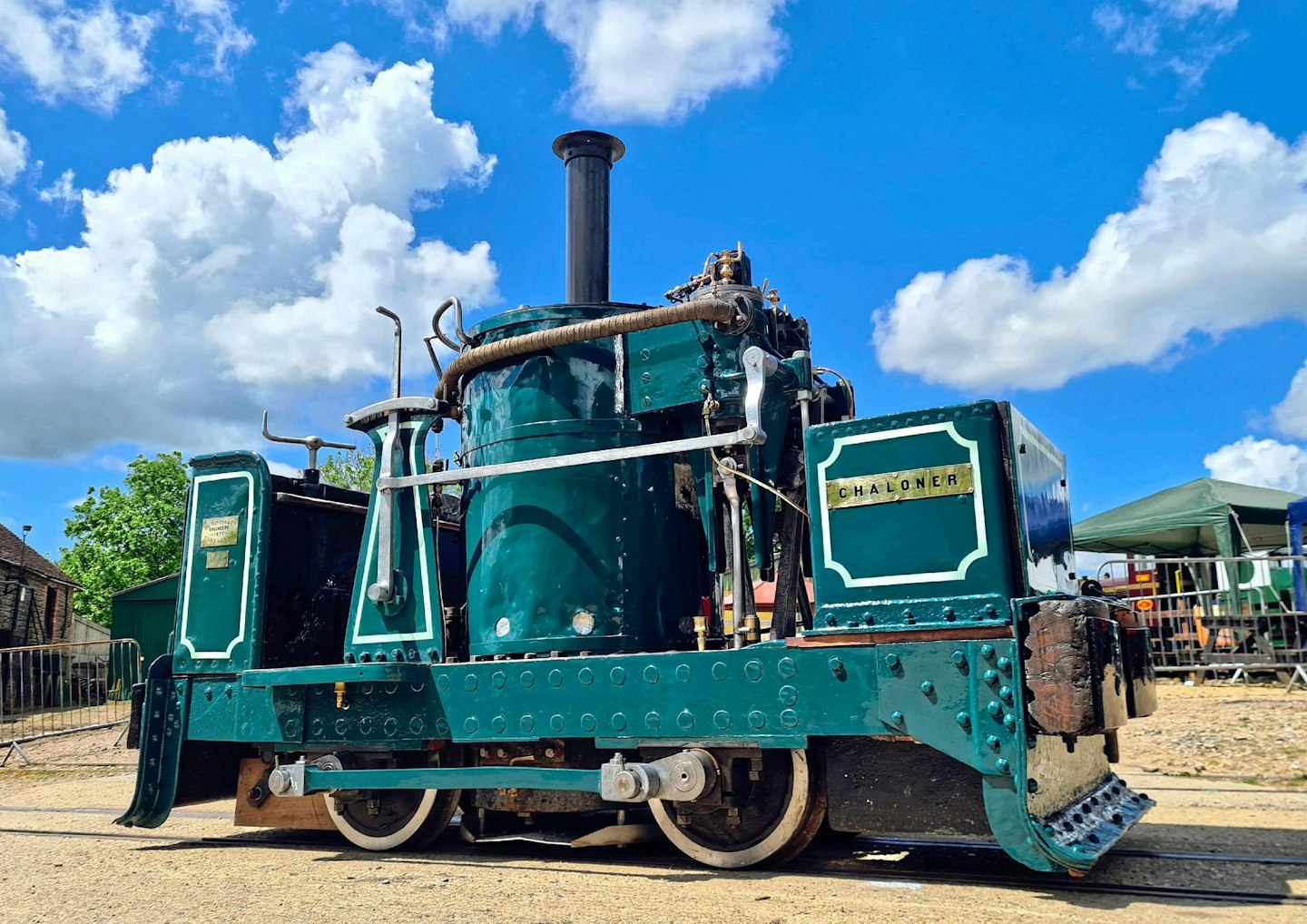
The re-awakening came in 1975. Realising that Chaloner’s centenary was only two years away, there started a rebuild, but one still with enormous cash limitations on what could and couldn’t be done. She was stripped, the frames cleaned, and all repainted in a smart brown lined livery, but the major development was the welding up of the top tubeplate by a generous local firm, which allowed the pressure to be increased to 125lb/sq. in. This, however, made only a small improvement to her indifferent performance.
Somewhat belatedly, an ashpan was designed and fitted. This had the dubious distinction of lasting no more than half an hour in service as it warped substantially as soon as it became hot and was hastily removed. Was this part of a learning curve for us or a further tantrum by a cantankerous old engine?
In 1977, out of the blue came an invitation from the National Railway Museum to host us in York, where Chaloner rested awhile. Here she was spectacularly posed, firstly alongside The Agenoria of 1829 and, eventually, in front of Mallard. Naturally, the steam ‘wags’ described this as the pairing of the world’s fastest and slowest steam locomotives, but such a title for Chaloner is now truly outdated, however apt it may have been then. Many years later, in 2019, she was to appear on the concourse at King’s Cross station, in front of the statue of Mallard’s creator, Sir Nigel Gresley. I wondered what he would have thought of this upstart ‘Coffeepot’ at his feet.
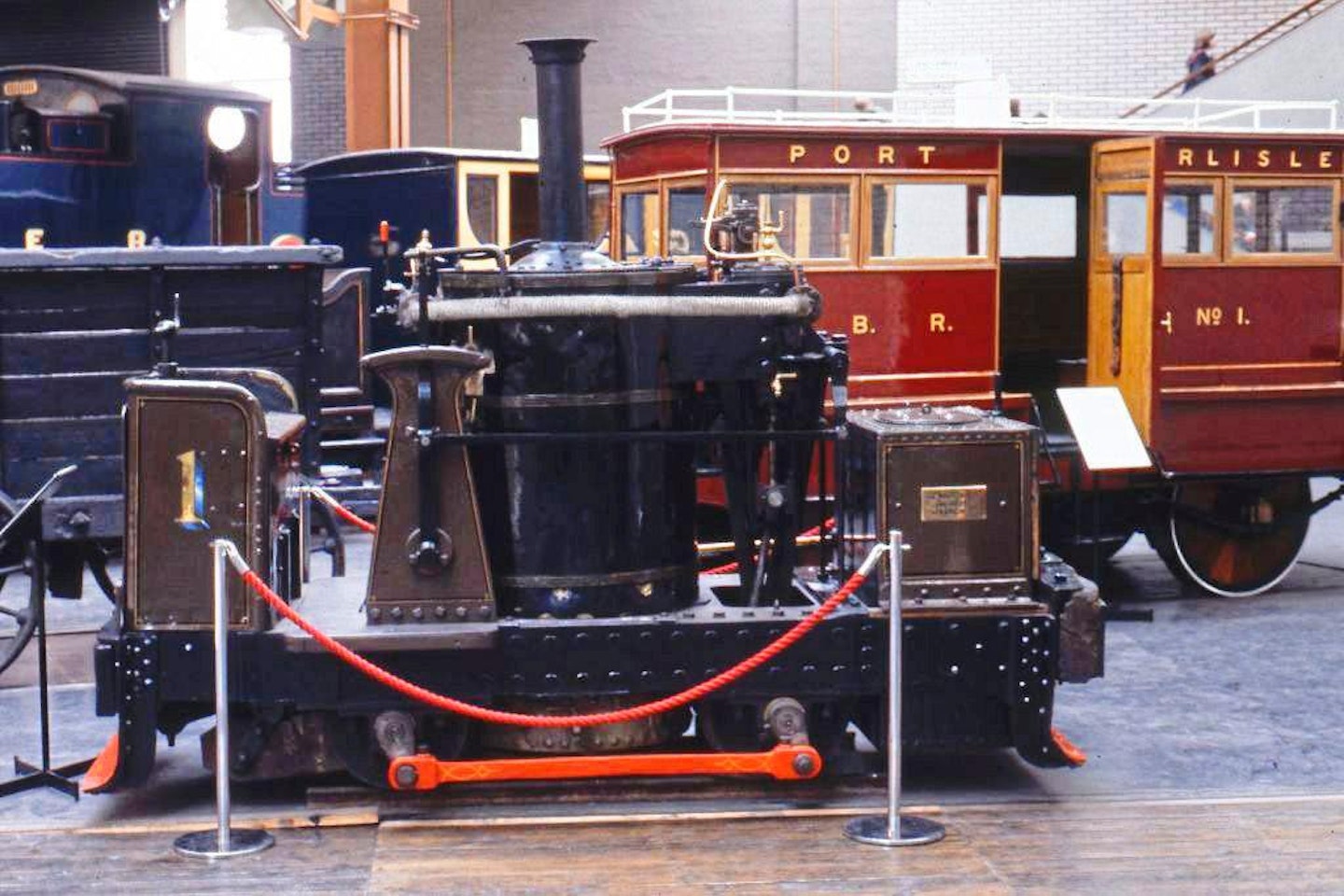
Back to Wales
A further momentous invitation came in 1986, this time from the Ffestiniog Railway, which invited Chaloner to join in with the line’s 150th anniversary celebrations. This was to totally change her fortunes. At Boston Lodge, she was re-united with Britomart, a ‘Quarry Hunslet’ she had previously worked with at Pen-yr-Orsedd Quarry and, on April 20, they both worked a rake of slate waggons up the hill from Minffordd yard to Gwyndy bank. Here we released the waggons, giving them a gentle push to roll back to Porthmadog, thus creating the first gravity train in 120 years, starting a practice which has continued and expanded to this day. Remarkably, Chaloner was the very first visiting steam engine to run on the Ffestiniog Railway, setting a precedent for dozens which have followed since.
However, this trip back to Wales emphasised her mechanical and power shortcomings, and I arranged she would return to Porthmadog the following year for some of the major flaws to be remedied. The most obvious start was to make the wheels round rather than oval, so cutting out the intense vibration which had marred every journey. Secondly, the cylinders and slidebars, each being a single casting, were removed and re-bored to perfection; piston and valve rods were machined, while the worn port faces were refurbished. Finally, new piston rings were fitted, and the front end was complete. At last, most of the steam could be used to power the locomotive, instead of half of it swishing past the pistons to escape up the chimney unused.
The first steaming from Boston Lodge Works was a revelation, the response from the regulator being instantaneous and reassuring. With a new crisp exhaust and healthy beat, I whisked her over the Cob to the Harbour station. Nobody could have been more ecstatic than I, until the time came to return. With repeated efforts, she would not budge an inch. To be ignominiously towed back to Boston Lodge by a diesel was not my idea of a triumph. Her cussed temperament had reappeared as it had done regularly since the earliest days of preservation. This time, it was a short-lived crisis. Large nuts at the top of each piston rod had been secured by split pins. Someone had thought to ‘modernise’ them by replacing them with rollpins, one of which had fractured. The moral is, of course, don’t mess about with centenarian locomotives, especially one like this with a chip on her shoulder.
This was not the last visit to Boston Lodge Works, as she returned in 1990 for the fitting of a new boiler by Bennett of Bristol.
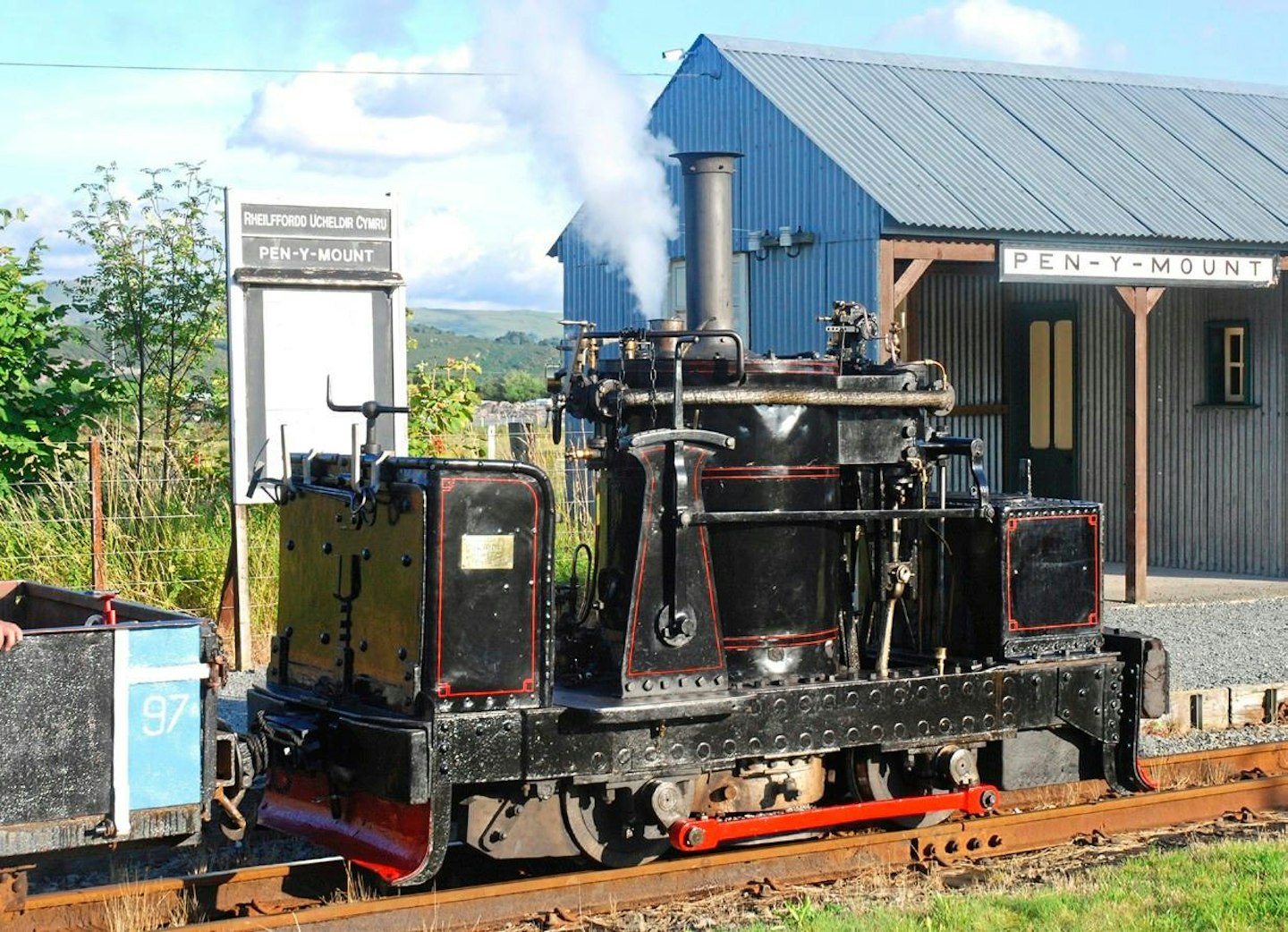
Making modifications
In terms of improvements, things never stood still for long in the ensuing years.
In 1992, David had turned his attention to the deteriorating bodywork. The tank was then almost a hundred years old and corroding. It was removed, thoroughly de-rusted, primed and hot-dipped galvanised, a technique which has proved effective and will ensure its continued existence.
The bunker was similarly decayed and was treated as far as possible in place, but was permanently cured by the removal of the rivets and treating the interspace between body and framework in the Covid rebuild of 2021-24.
In 2011, the very ancient worn tyres were replaced by Alan Keef, raising the engine significantly. This had the welcome effect of removing the unfortunate habit of the coupling rods and big ends striking the ground on certain road crossings, causing the whole engine to make a disconcerting leap in response. At the same time, the crank axle – the Achilles heel of all De Winton engines – was found to have cracks developing and, unlike in quarry days, there was no pool of redundant locomotives to rob. The axle was therefore sent to Farndon of Coventry for specialist welding and machining, a firm renowned as heavy crank specialists, and one more worry was over. Later, David found that the valves were of different lengths causing further inefficiencies, another example of borrowing bits from any other locomotive within reach. These were replaced and the blower and blastpipe nozzle improved.
In 2017 18, he tackled a design problem which had niggled him for some time. De Winton’s designer had made a piston head consisting of three loose rings sandwiched between upper and lower discs holding them in place. This arrangement meant that steam could bypass the rings via their expansion joints, contributing to loss of performance – six small gaps can waste a lot of steam. To combat this, he introduced a cast iron carrier with recesses, mounted within the old piston, enabling new narrower piston rings to sit in grooves, thereby cutting out potential steam loss. As befits correct conservation practice, the modification is fully reversible.
Jeffreys De Winton
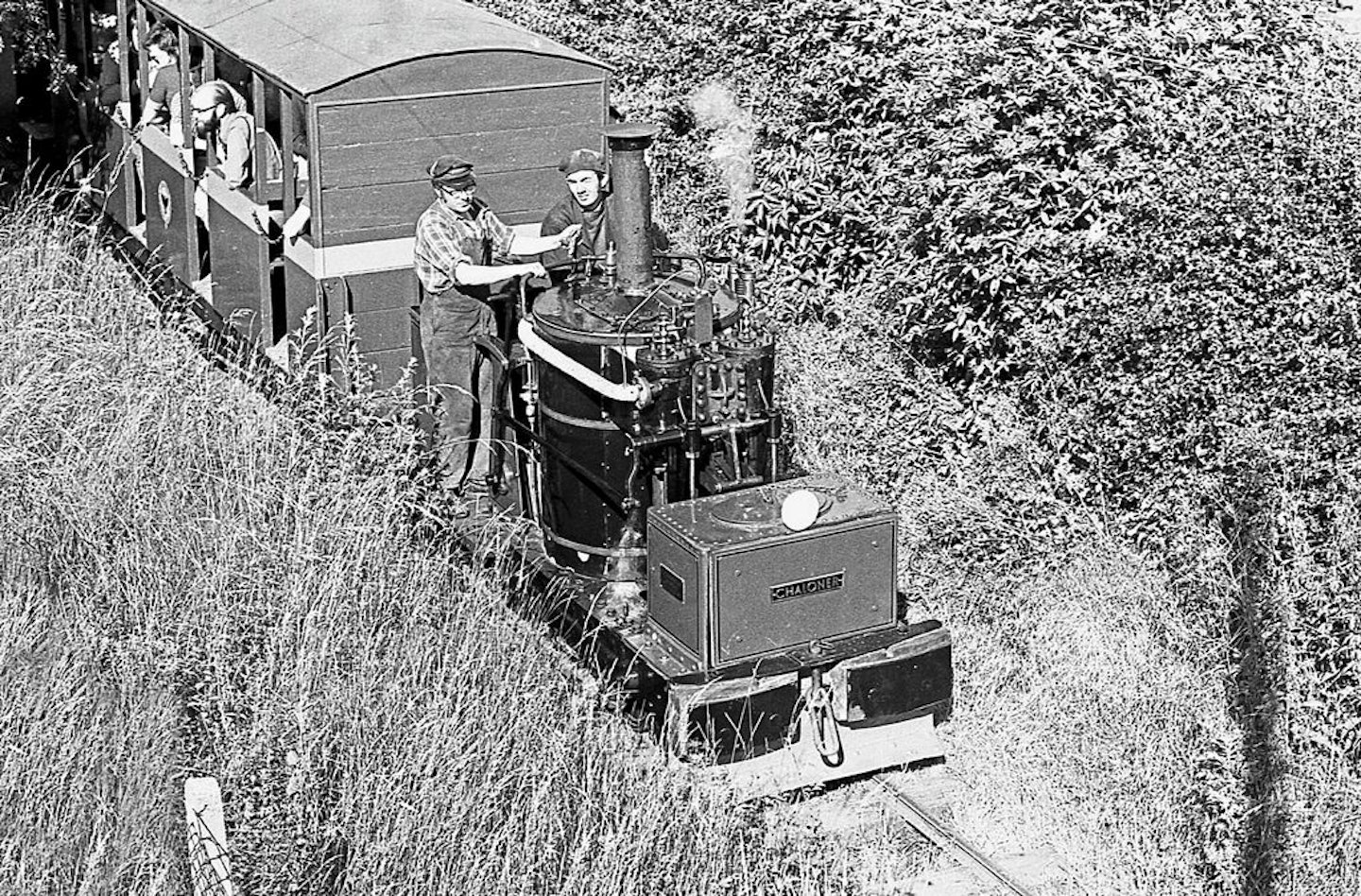
Despite the name, he was not French, and was born with the name Wilkins, though his ancestors had crossed the Channel in the 11th Century under the name of ‘De Wintona’. By 1848, he was an engineering apprentice at Fawcett, Preston in Liverpool and lived at 33 Mount Street in Liverpool directly opposite the ‘Mechanics Institute’ – later renamed the ‘Liverpool Institute’ and there learned his skills. This was no coincidence but convenience.
In 1944, I also became a pupil of the ‘Institute’, by then a grammar school, totally unaware of any connection with De Winton who was then unknown to me. Thus 100 years afterwards, I was unwittingly succeeding the man who became my hero. While Paul MacCartney and George Harrison were also pupils there a little later, I am unashamedly biased in thinking of Jeffreys De Winton as the premier old boy of the ‘Liverpool Institute’.
Driving a De Winton
I am often asked about driving techniques and what sort of a ride she gives, being without springs. Contrary to expectations, on good track, which is now commonplace, the riding is excellent and equal – if not superior – to a sprung engine. In the early days at Leighton Buzzard, this was far from the case and there were times on the decaying track when she would rock precariously on the two wheels which were sitting on the track, the other two being unconnected to any rails and floating in mid-air.
With the steady improvements over the years, driving and firing methods have changed considerably. Because of the inefficiency of the first few years, firing had to be done regularly on the move, which was not in the mind of the designer in 1877. To keep the fire in tolerably decent shape, the fireman had to kneel on the footplate while travelling and feed the coal down a chute to the fire with one hand, while hanging on grimly with the other. With feet over the edge this was a recipe for disaster and when one fireman did have his dangling foot hit badly by a passing coupling rod end, a protective plate was fitted, and firing was limited to only while stationary. Concerning driving, the regulator is light and easy to use. While at one time full gear was vital just to have any hope of reaching one’s destination, with subsequent improvements and extra notches being put in the reverser, she will now run sweetly in near to mid-gear for miles on end. In those early days of oval cylinders and leaking valves, the exhaust was a constant muffled roar. Now, with perfect valves and timing, the beat is as clear and precise as a main line locomotive in peak condition.
A constant form of amusement when hosting drivers from other railways was their absolute horror at seeing the water level disappear out of the bottom of the gauge glass, sometimes for five minutes or more, while we remained unconcerned. It had to be explained that in this vertical boilered locomotive, with her obnoxious habit of throwing hot, dirty water over anyone in reach, the water level must be kept low. Thus, when at times the water may become invisible, this is not a time to panic over an impending catastrophe. We have to reassure visiting drivers that in strange creatures such as Chaloner there is some 18 inches between the bottom of the gauge glass and the firebox crown, so that danger is minimal. They also find it difficult to comprehend that no such thing as a fusible plug in the firebox has ever been thought necessary and remains so to this day.
An interesting quirk of the regulator when acquired was that its inner barrel had somehow been fitted the wrong way round. Driving was not impaired one iota, but the ‘alteration’ fell short of best practice, for it became clear that the whistle could operate just fine when the locomotive was stationary, but not when the regulator was open! There appears to be no record of the number of quarrymen lost through this slight error.
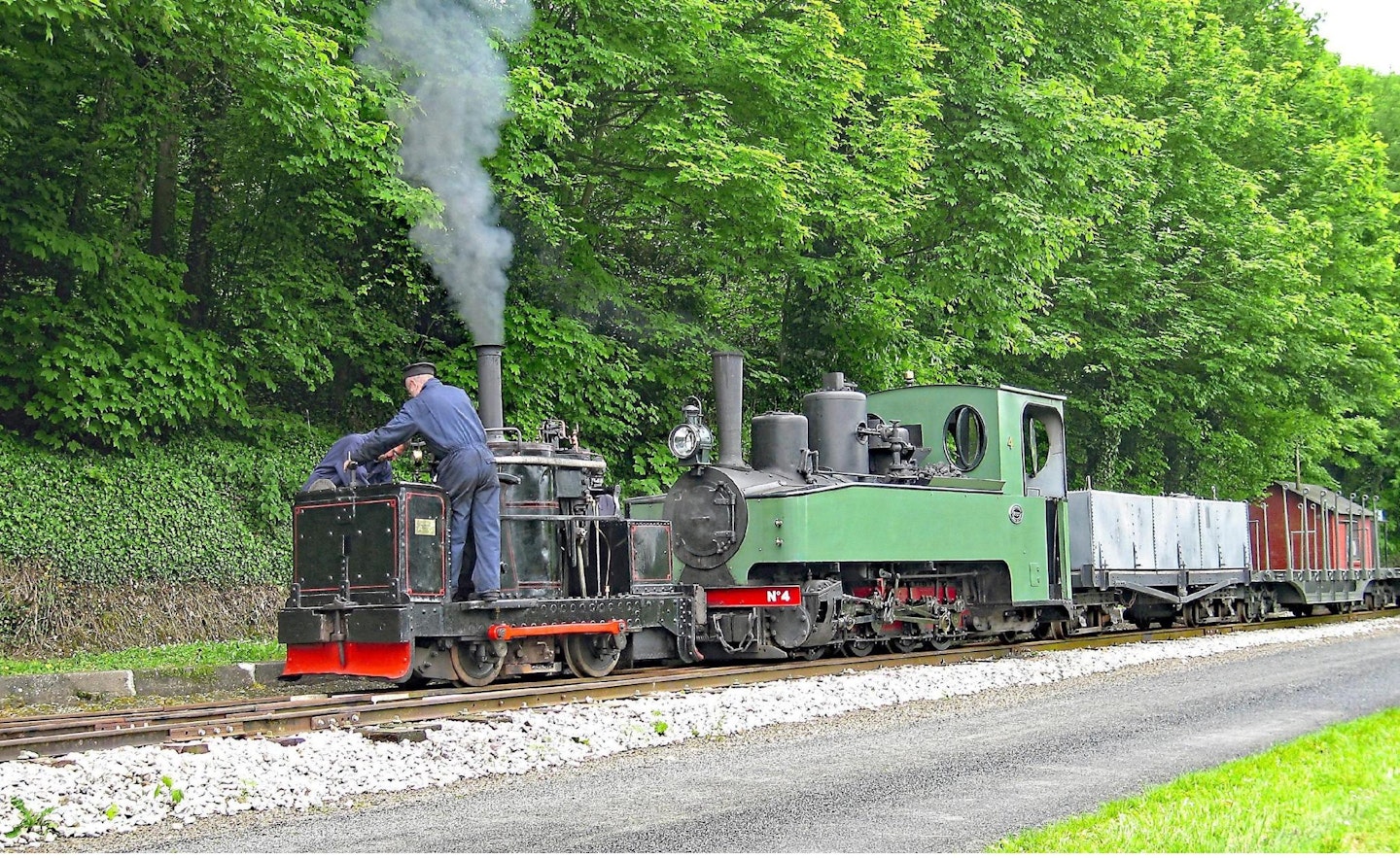
Speed and strength
The outings to Porthmadog were followed by a flurry of invitations to other railways. With 27 railways having played host to Chaloner, it is hard to choose highlights other than the unforgettable trips along the complete Ffestiniog & Welsh Highland Railways in 2011 and 2019 – inconceivable achievements for an antique quarry shunter. Fortunately for the crews, both trips were achieved in splendid weather. The first, in July 2011, followed the launch of the book De Winton of Caernarfon at the National Slate Museum at Llanberis, Chaloner being displayed there, then in the town square of Caernarfon and ultimately in the former De Winton erecting shop on the quay. Flagged off by the mayor of Caernarfon, we set off with just a bogie wagon and a handful of volunteers. It wasn’t going to be too demanding and there was ample water along the route which habitually serviced thirsty Garratts. At the time, we felt it was the greatest reward possible for 50 years of gradual improvement, and while David showed his regulator skills for most of the way, I couldn’t resist taking over for the final mile of the climb from Rhydd-Ddu to the summit in the shadow of Snowdon with an overwhelming sense of satisfaction.
While running 25 miles from Caernarfon to Porthmadog was not to be sniffed at, her ability to run fast – extremely fast – was a complete revelation. The Welsh Highland Railway had kindly provided an escort locomotive to follow in case of trouble. When we did occasionally stop, and the diesel, Upnor Castle, eventually came into view, her driver was emphatic that there was no way he could possibly keep up with us. On the level of the Glaslyn Estuary, Chaloner was clocked at a steady 22mph, though knowledgeable Ffestiniog passengers with us deemed it to be 25. In 2019, the complete trip was repeated but an escort was unnecessary, thus avoiding potential embarrassment to a diesel driver.
Speed was never the pre-requisite for a quarry shunter but there are nevertheless a couple of memories of working hard which are impossible to ignore. Galloping up the short grade at Groudle Glen in the Isle of Man in 1995 was unforgettable to all who saw her, while in 2018 on a member’s special on her home turf of Leighton Buzzard, her astonishing climb of the 1 in 24 of Marley’s Bank at 18mph with two full coaches and a brake van, nine tons in tow, recalled her dismal efforts 50 years earlier when struggling to lift herself alone up the very same bank.
Visits to other railways have usually been more sedate. In addition to performing at most 2ft gauge lines in Britain, she has ventured cross-Channel to appear at the Frankfurt Feldbahn Museum, Maldegem in Belgium and, in 2009, to the Froissy-Cappy-Dompierre line in Picardy. If the Welsh Highland trip had first shown her speed capability, the visit to Froissy had already revealed her haulage performance to be just as dramatic. Running on the level part of the line adjacent to the Somme Canal, the load started at 11 tons with two heavy French First World War well wagons and a bogie tanker. Someone then decided to hitch on a German ‘Feldbahn’ 0-6-0 tank for the next trip while someone – i.e. me – coaxed the French driver into keeping the regulator closed. Finally, the Barclay 0-6-0T Doll, also visiting from Leighton Buzzard joined the train, again as a dead weight. With 32 tons in tow, Chaloner had plenty of steam to spare after a rapid one-mile run, confirming the reputed feat of Rhymney – a fellow De Winton at Pen-yr-Orsedd quarry – of being capable of starting and hauling 40 tons on the level.
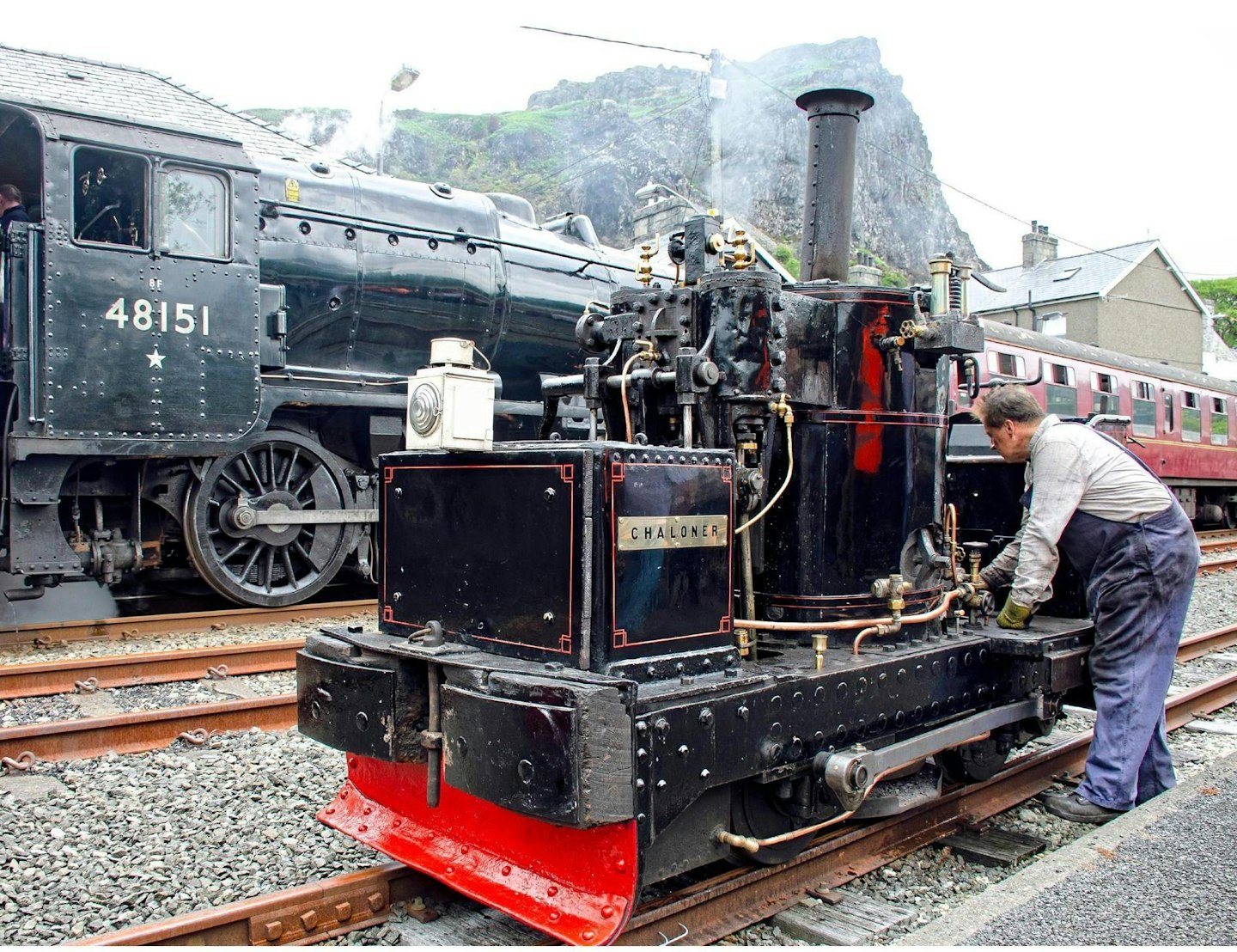
A new lease of life
It might be thought that with all the improvements done over the years, that there would nothing left to remedy, but not so. The most recent rebuild was started in 2019 and was due to be completed in three years, but that was before anyone had heard of Covid and the catastrophic events which came with it. David was committed that everything be done to the highest standards, not only mechanically, but to protect all the original material from future corrosion and, in his own words, so that he would not need to do anything further in his own lifetime.
All body parts, boiler and fittings were removed from the frames which were then shot-blasted and treated against rust. Having earlier spent decades of my life laboriously filling in a multitude of rusty pits to achieve a high gloss paint finish, to see them all reappear was personally a hard pill to swallow, though justified. The top of the water tank had suffered from corrosion between the plates, thinning them and forcing them apart. The only way to correct this and prevent it recurring, was to drill out the rivets, remove the top plate completely, de-rust and treat all surfaces, then f latten and refit it with round headed bolts in lieu of rivets. The same treatment was needed for rusting areas around the lower rim of the bunker. Thus, her De Winton tank and bunker of unknown 19th Century origins began life anew.
In the case of the boiler, there was no such solution, and replacement was inevitable. The new one, the fourth in 148 years, was manufactured by Mendip Steam Restoration of Bridgwater in Somerset and fitted there.
The ancient crank axle was again found to have new cracks which had to be welded up and machined once again, this time at Statfold Barn. While there, a wheel centre was also found fractured and needed replacing. Similar disappointments followed in quick succession. After a long wait for the return of the wheels and axles, two days before they were due to be sent back, a serious crack was found in one of the fly cranks and, due to Covid, another three months went by until a replacement could be made. The cladding which had been roughly overlapped since purchase was now fitted correctly to jointing strips. All very commendable, but in doing so this caused an increase in the overall diameter which then fouled the eccentrics and provided a few more hours work to correct. Improvements were also made to the valves and eccentrics and adjustments were made to enable more efficient passage of steam through the exhaust and blast pipe.
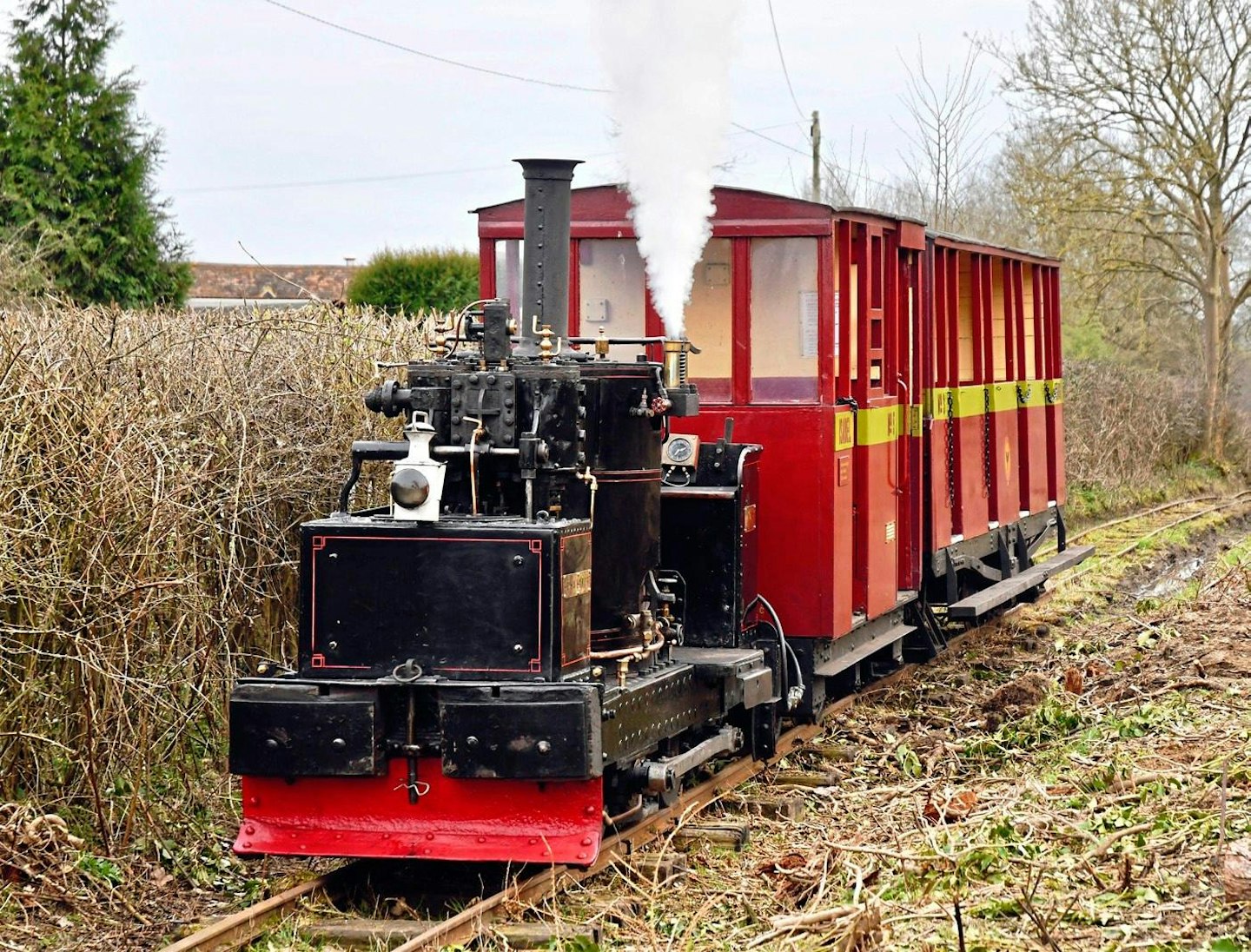
A question of colour
Another challenge in this rebuild was to research and as far as possible to find the correct colour scheme – all previous liveries having been products of my own imagination. This time it was to be as accurate as we could manage. An incredible piece of good fortune arose while the engine was on display in the De Winton works in Caernarfon in 2011. “Would this be of interest?” enquired our visitor, Brian Hurst. Stunned, we found ourselves looking at an original sepia works photograph of Chaloner when new in 1877. He had acquired it in a sale, and we will always be grateful to him for bringing it to our attention and allowing me to copy it. To have any works photograph of that date was unusual, but for it to be Chaloner herself from among 70-odd other locomotives by De Winton was incredible.
It was not hard to see the reason, which was to display a totally new feature – a cab, almost certainly the first quarry engine to receive such a luxury and the only one to ever appear on a De Winton locomotive. This accounts for her being described as a ‘hooded locomotive’ when sold second-hand in 1888 to the quarry ‘next door’. The cab was immediately removed and presumably scrapped by the new purchaser, Pen-yr-Orsedd Quarry, to enable it to navigate tunnels, while the chimney had to be cut down for the same reason. The photograph, although showing the engine in workshop grey, does indicate the contour of the original lining, which differs from the standard design adopted later.
So, it was now possible to arrive at a realistic plan for the new livery. It also allowed David to make drawings of the cab from which we were able to make a replica, which was fitted some years ago and is ‘worn’ from time to time. It is impossible to guarantee the accuracy of the basic colour, but we have done our utmost from the available evidence – small fragments obtained from other locomotives of the same period – which have inevitably been subject to weathering and age.
It was now time for me to come back into the frame as the long-time locomotive painter, and in 2021 the dining room was again commandeered as a paint shop, where for several months the table was devoid of food, being replaced by several large pieces of cladding in turn, each needing a minimum of six coats of paint and varnish. Covid did have the advantage of giving plenty of time to spare. At the same time, the bunker was shoe horned into the side of the house and painted and lined there, and all woodwork preserved and treated in the garden shed – where else?
The green is unusual for narrow gauge, though it appears to have been used by some main line railways of the time. But colour was not all that mattered for De Winton. Most vertical boilered engines of the mid-to-late 19th Century – for instance by Chaplin, and Head, Wrightson – were extremely functional visually with no consideration of their appearance. De Winton, possibly through his aristocratic upbringing (see panel) had an eye for design and his ‘new’ design of 1877, of which Chaloner was the first, was way in advance of her contemporaries, being a very tidy machine with a wealth of polished steel set off against the new stylish colour.
It is improbable that anyone is still around who saw these engines running around the slate quarries, but from photographs we know that in their later years they were unkempt and scruffy, and far removed from their original smart appearance. Fortunately, a few photos have survived of the 3ft gauge locomotives supplied to the granite quarries at Penmaenmawr, and these show what splendidly attractive machines they were in their prime, with their smart lining, gleaming polished steel reversing arms, reach rods, coupling rods and regulator and brake handles. To return these items to their original appearance on Chaloner, they have now been brushed satin-plated, and the resulting ensemble is stunning. If watching from above, I am certain Jeffreys De Winton must surely be well pleased.
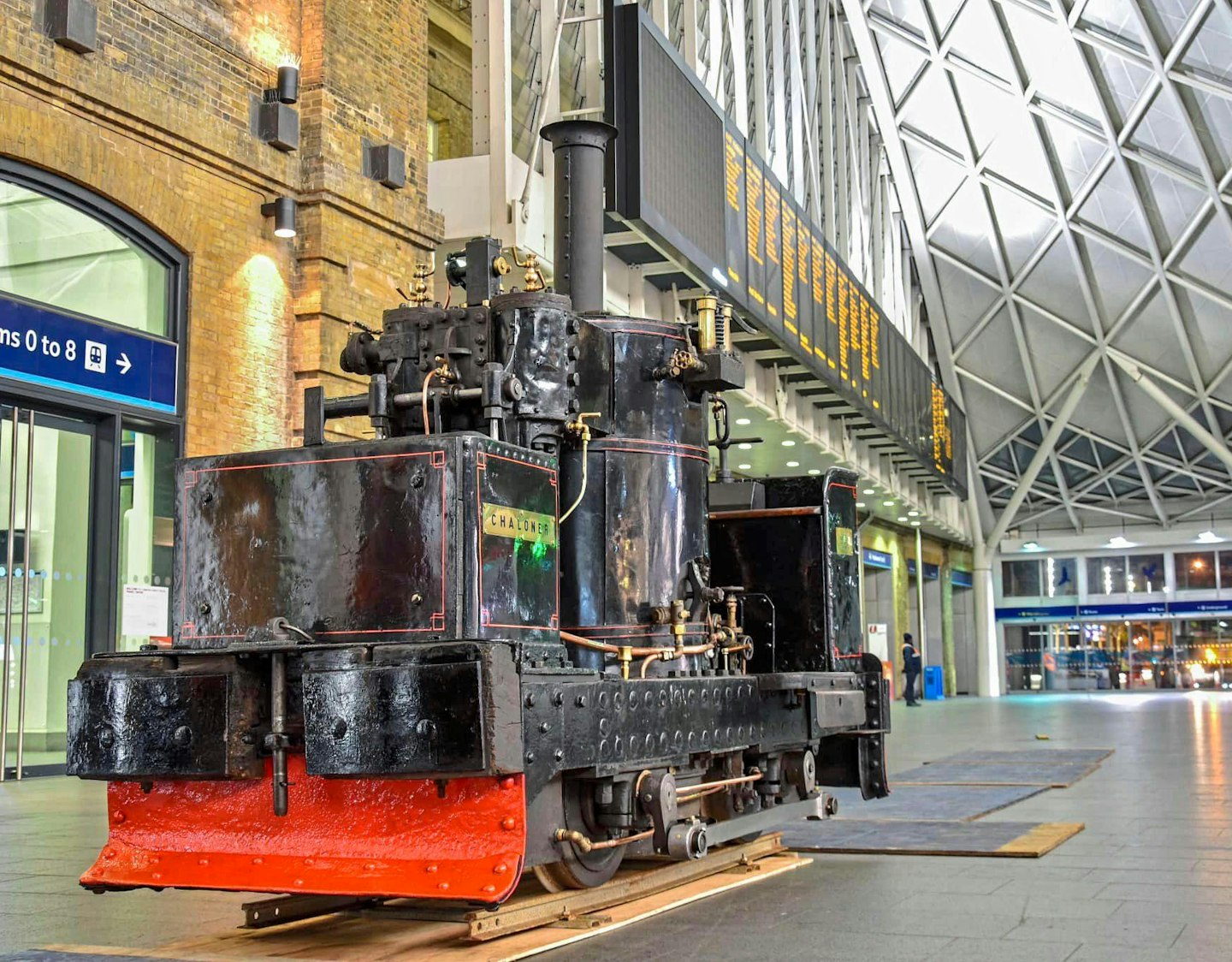
Looking back
So, at 64 years, it has been a long haul, but extraordinarily satisfying, despite dominating family life for many years. Who was in charge – man or machine? Now Chaloner is running as never before, and David and his small team of helpers can be proud of their efforts. The latest improvements, particularly to the blast pipe and valves, seem to be working well and she will now be in as good shape, if not better, than when first built. This year will hopefully prove this, for she is destined to appear for much of the summer at Porthmadog, including the ‘Railway 200’ Platinum Jubilee Weekend on June 19-22. And, fingers crossed, she may even be allowed to venture out on to the Welsh Highland Railway to stretch her ancient limbs once more.
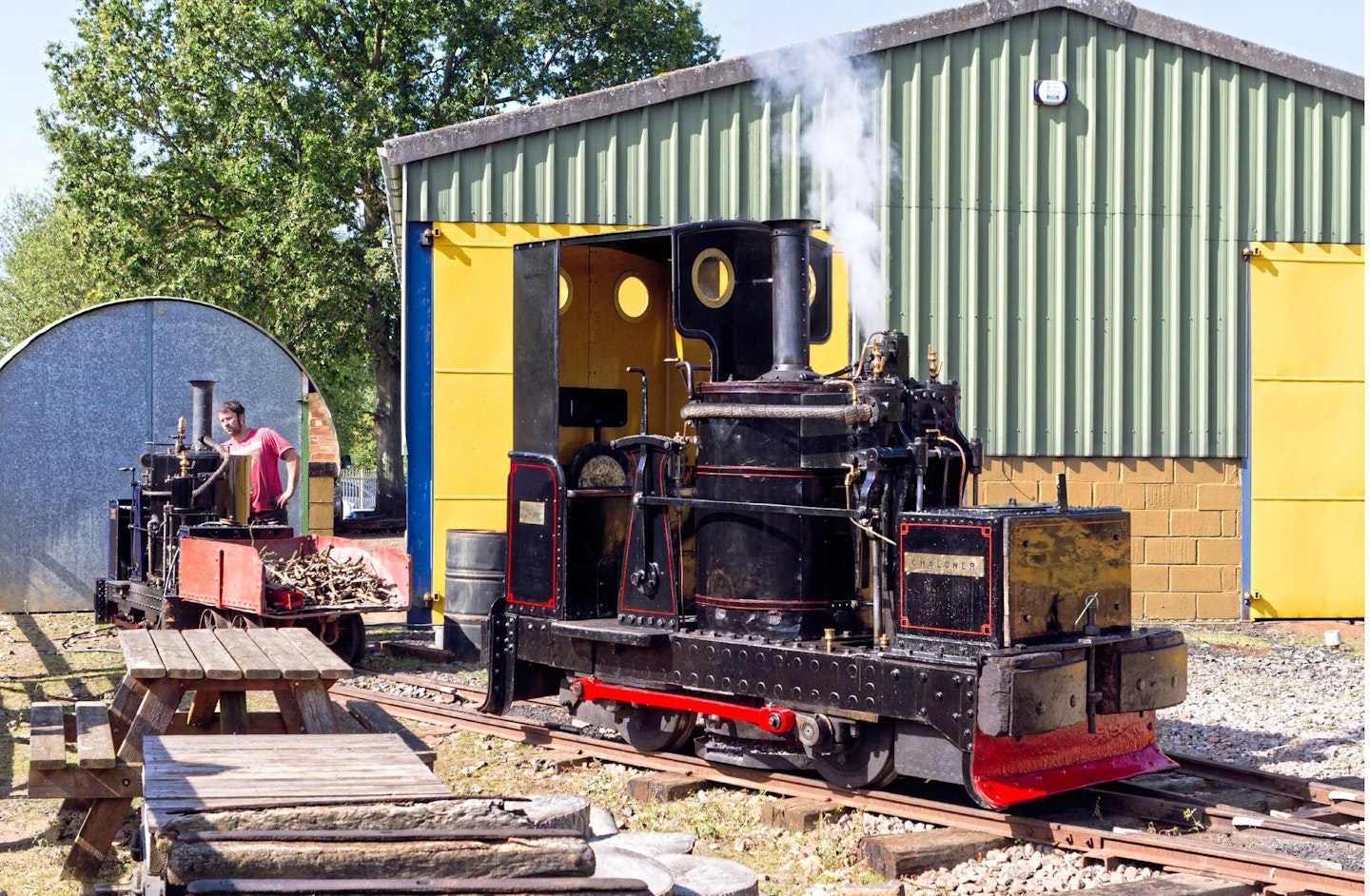
Each issue of Steam Railway delivers a wealth of information that spans the past, present and future of our beloved railways. Featuring stunning photography, exclusive stories and expert analysis, Steam Railway is a collector's item for every railway enthusiast.
Choose the right subscription for you and get instant digital access to the latest issue.

